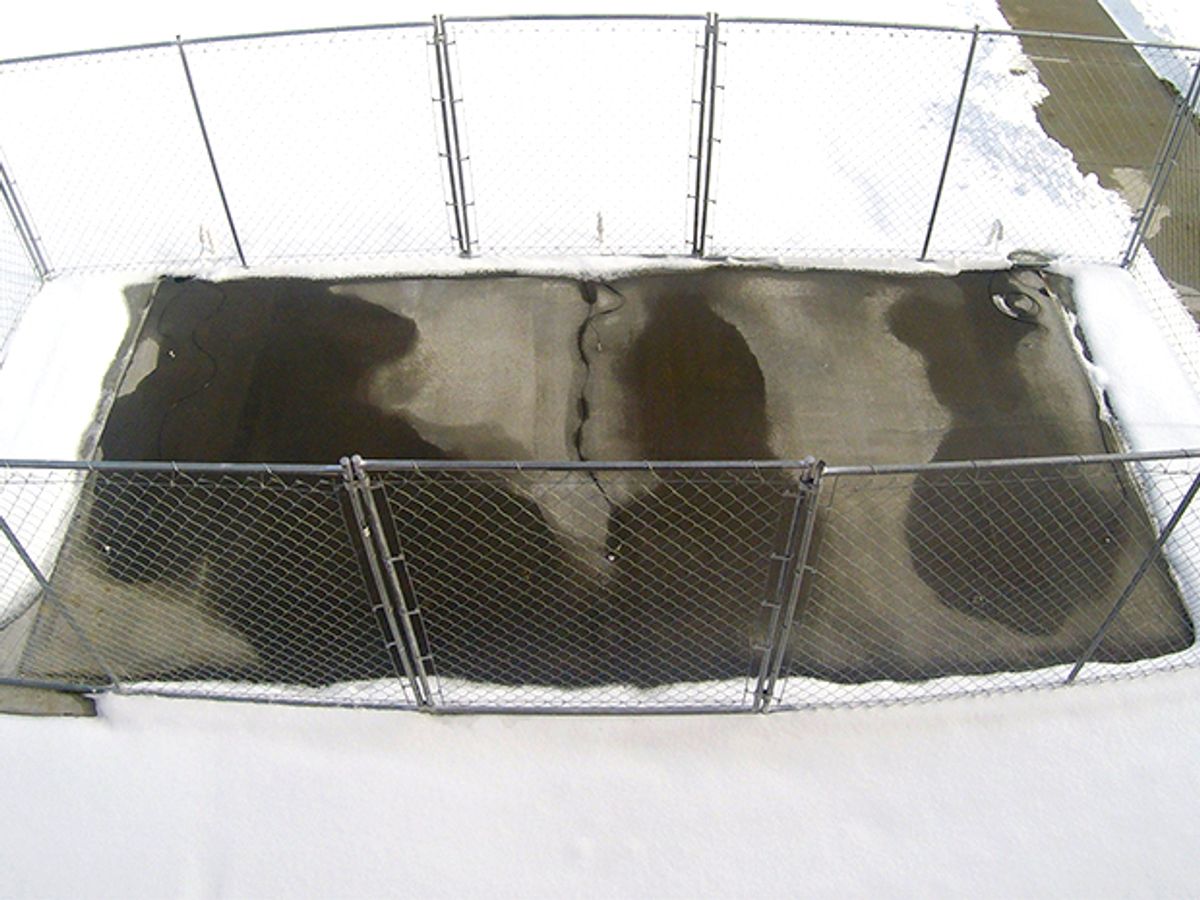If you’re tired of shoveling snow, conductive concrete could be your savior. Researchers at the University of Nebraska-Lincoln engineered concrete that melts ice.
The energized concrete can be used on driveways, roadways, and bridges. Since magnetite-rich aggregates are blended into the specially-designed mix, it can also be used for military applications in electromagnetic shielding.
For DIY-enthusiasts, it may seem tempting to whip up a batch of homebrewed conductive-concrete mix. But, it’s not as simple as plunging a steel rod into concrete and juicing it up with a power source.
Firstly, a precise formula of conductive components—steel fibers, steel shavings, and carbon particles—is added to conventional concrete mix. Then, angle iron acting as an electrode is cast in the concrete and connected to a power supply. Precut holes in the angle iron allow concrete to flow through the mix, providing proper anchorage. To ensure safety, the spacing between electrodes is also fine-tuned.
Here’s the reseacher’s time-lapse video of the concrete slab in action.

“It saves time. It saves money. It saves lives,” says Chris Tuan, professor of civil engineering at University of Nebraska-Lincoln. For bridge applications, this could be an alternative to de-icing liquid, which could potentially weaken bridges.
In 2002, Tuan installed 52 slabs of conductive concrete [pdf] on the 45-meter-long Roca Spur Bridge that spans the Salt Creek at Lincoln, Neb. A power line near the bridge supplied a three-phase, 600-ampere, 220-volt AC power source. Whenever embedded sensors detected that the slabs’ temperature dropped below 40 degrees Fahrenheit, the power source turned on until they reached 55 degrees Fahrenheit. A “current-monitoring unit” enabled system operators to safety restrict the amount of electrical current.
Conductive concrete, which costs roughly 2.5 times as much as traditional concrete, is not a new concept. In fact, National Research Council Canada has already been issued patents in Canada, the United States, and Europe. But Tuan’s research, funded by the U.S. Federal Aviation Administration (FAA), is focusing on cost-effective, electrically conductive materials that also have long-term durability and mechanical strength.
“A lot of researchers that were using carbon fibers, their products cannot be implemented because it’s cost inhibitive,” Tuan says.
Phase one of the research project wraps up in March. If the FAA green lights phase two, says Tuan, power consumption and construction costs will be evaluated by building a 45-by-15-meter test pad at the FAA’s technical center in Atlantic City, N.J.
Theresa Chong is a video host and multimedia technology journalist based in Palo Alto, Calif. As on-camera talent, she has performed science experiments for “Discovery News,” explained how virtual reality works for USA Today, and interviewed Adam Savage for IEEE Spectrum. She has written about wearables for Scientific American and travel tech for Architectural Digest. With a DSLR, GoPro, and green screen by her side, she has produced digital videos of robots, driverless cars, and 3D printing. She earned a master’s degree from Northwestern University’s Medill School of Journalism, and in a prior life she worked as a civil engineer.



